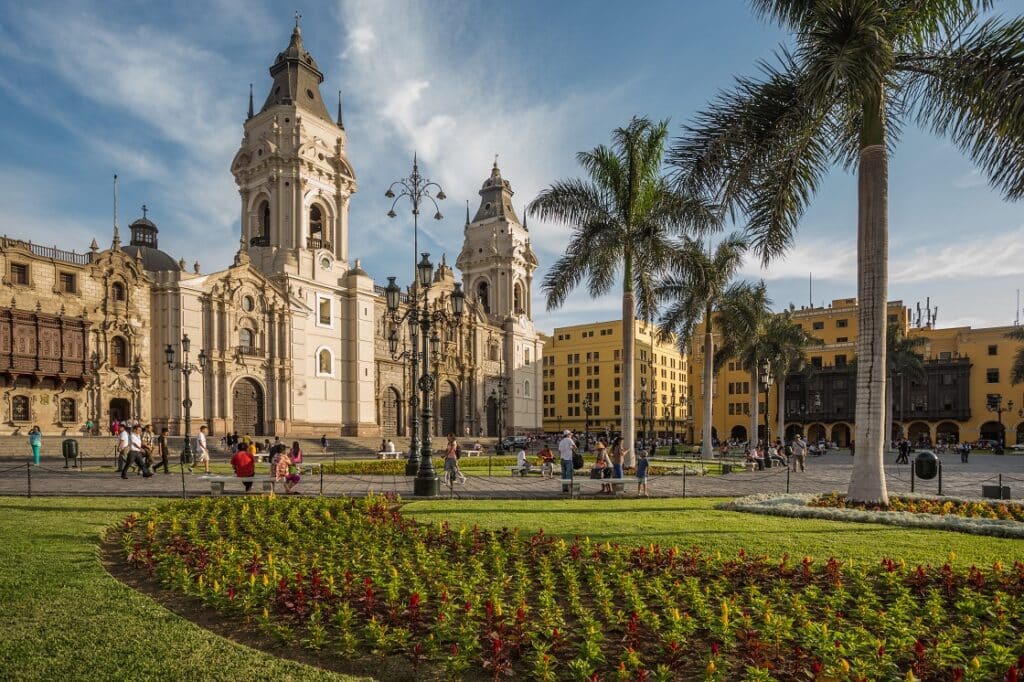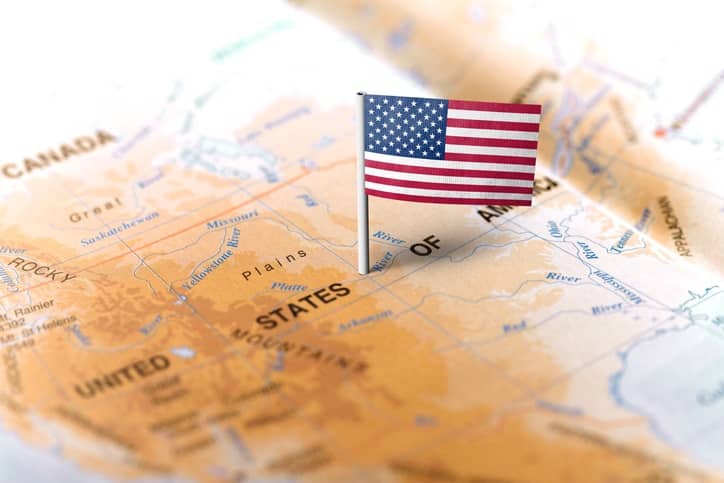How to invest in the US stocks from Peru – that will be the title of this article.
Peru is a country that attracts more and more tourists from all over the world from year to year. Perhaps this is the most interesting, exotic and exciting destination in all of America. It is not for nothing that Peru is called the archaeological capital of South America, because it is in these places that you can contemplate the legendary ruins of Machu Picchu, which have recently become one of the new wonders of the world.
The sights of Peru are magnificent palaces, majestic pyramids, ancient mausoleums and many other buildings of various civilizations. Therefore, rest in Peru is primarily interesting for those who are interested in history, archeology, as well as for those who seek to travel, and not bask in the sun on the seashore or ocean.

Although this is in abundance here, and many tourists prefer the Pacific coast in Peru, rather than in other tourist countries, as the combination of unique excursions followed by relaxing on the beach is perhaps the best thing you can think of.
There are many pre-European monuments in Peru. These are the cultures of Chan-Chan, Kilki, Chavan, Nazca, Chimu, Lurche, Mochiuca, Tiahuanko and the famous Inca. Peru has an extremely amazing nature. These are the great Andes, the “green hell” of the Amazon valley, the relict lake-sea Titicaca, as well as the famous sand dunes of the Pacific Ocean. Such a wide variety of attractions is concentrated in a relatively small area.
Tours in Peru are a great variety of natural landscapes that contrast with each other like no other country in the world. There are impenetrable forests, sandy deserts, coastlines, mountain peaks of the Andes, tropical Amazon jungles and a huge variety of flora and fauna. All this attracts travelers who come here every year to make sure that all the conversations and stories about Peru are not fairy tales.
Geographically, Peru is located in the west of South America. The northern neighbors are Ecuador and Colombia, in the east, the state borders on Brazil and Bolivia, and in the south – on Chile. The west of Peru is washed by the Pacific Ocean, where there are picturesque beaches. The total area of the country is 1,285,216 square kilometers, including several coastal islets.
The climate in Peru is sultry and humid. The only exceptions are some mountainous regions. The temperature does not change throughout the year, only small fluctuations from 15 to 28 degrees. In the mountains, as a rule, it is a little cool, but on the coast, on average, 23-25 degrees, which makes this place ideal for water activities. The rainy season here begins in December and ends in May, while the rest of the time the sun is always shining.
Before choosing a country for permanent residence, you should familiarize yourself with the pros and cons that can please and upset. This article contains useful information for those who are interested in the Republic of Peru and further residence in it.
Peru is the homeland of the Indians with a fascinating history and many exciting places created by nature and human hands. The republic is located in South America. Hot climate, jungle and Atlantic coast, Peru has everything a tourist country needs, but is it meant for life?
The pros of living in Peru
- Good relationship. Peruvians behave differently with foreigners than in other hot countries. They are very respectful and loyal, perhaps it borders on a certain fear of inadvertently offending a stranger.
- Employment. It is easy to find a job in Peru, but how much it will be highly paid depends on the specialty and on the employer. If the salary is agreed in advance, then the chances of receiving less than the locals will be impossible. With knowledge of English and Spanish, the chances of earning more are doubled.
- Bargaining. In Peru, it is customary to bargain always and everywhere, not only at the bazaar. You can bargain with your employer, landlord, even in hotels and shops. If at the bazaar the bidding proceeds positively, then there is a chance to pick up for free what you came for. Peruvians greatly encourage hanging tongues and sharpness of mind.
- Prices. Prices in Peru are very democratic, as for fruits and vegetables, the prices for them are very low, since the Peruvians grow them themselves. Cereals, meat and other products are also not very expensive.
- Restaurants. In big cities like Lima, foodies and connoisseurs of the art of cooking can visit restaurants that are some of the best in the world! Most of the establishments are representatives of the Michelin Association, which is not always possible to get into in Europe, but here they are all within walking distance.
- Climate. Peru has high humidity, which is both a plus and a minus. Due to moisture, the skin does not dry out, and therefore premature aging does not occur under the hot sun. In winter, things are much worse, because of the low temperature and high humidity, it is very easy to get sick.
- Jungle. This is an exotic entertainment for people who prefer to spend their free time without splashing in the ocean. Peru is full of dense green forests with unusual inhabitants. Most often, you can find anaconda, and if you catch it, the locals will prepare an excellent delicacy.
- Plants. There is always something to see on the streets. There are many varieties of cacti and palms in Peru, they are found in small and huge sizes. You can often find trees and bushes that bear fruit, so if you don’t have time or money to run into the market, you can always pick fruits from growing trees.
The cons of living in Peru
- The emotionality of the Peruvians. This, perhaps, will be a disadvantage for the new arrivals. When a person studies a language or speaks it at an initial level, in order to understand the essence of what is happening, he tries to understand the emotion and mood of the interlocutor. In this case, extreme emotionality can be confusing.
- Security. This is definitely Peru’s main problem. It is important to know which places are worth going and which are not. You need to limit yourself in wearing jewelry, and try once again to leave valuable things at home.
- Street food. As mentioned above, it is possible to find restaurants with excellent cuisine in Peru, but this does not mean that the food that is prepared on the street is of high quality and wholesome. If food is cooked with undistilled water, the likelihood of getting sick increases. Snacks outside the home and establishments should be avoided.
- Animals. Thanks to its pleasant climate, Peru is home to many exotic animals, both harmless and the most dangerous. If you wander into the jungle without an escort, an encounter with poisonous animals is inevitable. It is worthwhile to be wary of insects that have flown into the house, you do not need to catch them with your bare hands.
- Fraud. The poverty rate is high, so some unscrupulous Peruvians will not miss the opportunity to fool a foreigner. For safety, you should not carry a large amount of money and documents. It is better to make all sorts of copies and wear instead of the original before leaving for Peru.
- Road traffic. In contrast to the CIS countries, traffic rules in Peru are not so strongly enforced, so using public transport can cause a lot of stress. In small towns, there are practically no cars, and the only means of transportation are golf carts. It is not practical if there is a large company, since the number of seats is only for two.
- Disasters. The cities that are located on the ocean coast suffer from typhoons, floods, and those in the hinterland of the republic become victims of volcanic eruptions and earthquakes. While on the territory of the republic, one can get acquainted with all existing disasters. Although the quality of evacuation is improving every year, it still remains one of the big disadvantages of Peru.
- Water. The water can be dirty, especially when it comes to the Amazon and the ocean. No matter how Peruvians watch the cleaning of the beaches, the water still remains dirty and oversaturated with various infections, which are easy to catch without vaccinations.

Investing in the US stocks from Peru
Peruvian local or expat investors looking to invest overseas are getting a lot of attention these days. In addition to existing foreign funds, several international mutual fund schemes have recently been launched to diversify their domestic portfolios.
On the other hand, buying foreign shares is not as difficult as it sounds. Owning some of the top US stocks like Facebook, Apple or Amazon, including recent growth leaders like Salesforce, Visa, American Express Co., Costco Wholesale Corp., Expedia Group, Zivo Bioscience, Paltalk.
But where to start and how to invest in the US stocks from Peru? Later in this article, you can find worthy information on how to make your investment and the reasons you should start thinking about making your first step towards it.

Where to start?
You probably know that the exchange market is nowadays electronic, where you can trade while your device is connected to the Internet. The process will require an intermediary, that is either a brokerage company that has a license for stock trading or a bank. Before you start your researches, it will be necessary to be aware of a few very important points.
1. Estimate how much you are willing to invest
Theoretically, you can start with any amount, even from 40 dollars, anyways this amount will not be enough to compensate for both the intermediary’s commission and the time spent on the trades. It will be better to start your investing career in the case where you are ready to risk several hundreds of dollars. And better for you, first imagine in advance the situation where you lost all your money, if you are ready to lose it, you can give it a try.
2. Consider how much time you are willing to spend on managing your investments
You have to be ready to get acquainted with the topic, study statistics and stock market reports, follow the charts during the day, and try to trade on your own. After these main steps, you will need to find a broker to act as your intermediary for accessing the exchange. You will have to make the buying and selling decisions on your own, and the broker will follow them.
In case you are not ready to spend much time and effort on this process, then you had better consider one of the forms of trust management. Here what you need to do is provide the funds and make some minimum of decisions, entrusting the further steps of trading to the professionals.
You can sign an agreement with the professional, transfer money to him, after what he will decide instead of you when and what assets to buy and when to sell. The main goal is to make investments with maximum benefits and choose the best level of risk personally for you.
Another option is to invest in mutual funds (mutual funds). These are ready-made sets of different securities or other assets.

3. Choose your strategy and assets
Decide what you will invest in. Stick to a specific strategy. What is strategy? It is a set of investment parameters that will help you determine your style of behavior on the exchange: which assets you want to trade, how often you sell them, what sources do you use as your guides when making decisions.
Here is the simplest outline of the strategy:
- assets;
- the period for which you want to invest;
- the maximum amount of losses.
Let’s say the assets are shares of a hospitality company, the investing period is 2 years, the amount of losses is 20%. In this case, you immediately sell assets if they have fallen in price by 20%, even if the year has not passed yet.
If you decided to pick the option of trust management, then you also need to pick a strategy. This is the only case, that will require your participation – choose one of the offers that are already on the market, or discuss an individual strategy with your trustee.
4. Find an intermediary company
Once you have a strategy, it will be easier to find a middleman. The most important point to consider while choosing a broker, trustee or management company is to make sure that they have a license from the Central Bank of Peru.
If you have chosen to invest on your own, there is the following path to go:
- conclude an agreement with a broker;
- open and replenish a brokerage account;
- install a special program for trading;
- start buying and selling.
If you have chosen the option of trust management company, then it will be enough to sign an agreement and transfer the money to the trustee or the management company of the mutual fund.
Benefits of investing in the US stocks

No other financial market is as large, accessible, transparent, and liquid as the US market. The high volume of trades and transactions, market capitalization and the number of companies make the US stock market the most unique investment platform for many of us, it is a great opportunity for international investors.
Best capitalization
The US stock markets represent the largest concentration of wealth in history. Together, the New York Stock Exchange and NASDAQ constitute the largest financial market in the world.
More liquidity
If you look only at the NYSE, in 2018 the value of trading in shares was 7.6 times higher than in London, 3.1 times higher than in Tokyo, and 8.3 times higher than in Hong Kong. The US markets are also the largest in terms of turnover. This means that you have a good chance of finding a buyer or seller for any stock at any time.
Investors should be aware that there are securities in the US market that are not liquid and should also consider their individual situation before purchasing any specific securities.
Greater diversification
The US markets offer access to a large number of US companies seeking capital. With about 5,000 companies to choose from, you can invest in major corporations and global brands.
Why is it became important to invest in stock markets?
The stock market has created immense wealth over the years. On average, the S&P 500, which is made up of the 500 largest US public companies, generated returns of 8% to 12% per year.
Keep in mind, however, that the stock market does not rise every year. The S&P 500 typically falls three times every 10 years. Some of these falls can seem pretty brutal, and this level of volatility isn’t for everyone. But if you can handle your fear, stocks can deliver significantly higher returns in the long run than other investment options.
What are the benefits of investing in stocks?

There are many benefits to investing in stocks. Seven large:
- Higher profit potential than alternatives such as bank CDs, gold, and government bonds.
- The ability to protect your wealth from inflation, since the yield is often much higher than the inflation rate.
- The ability to receive regular passive income from dividends.
- The ability to own a tiny piece of a company whose products or services you like.
- Ease of buying and selling, making stocks a more liquid investment compared to other options such as real estate.
- The ability to diversify your portfolio across different industries.
- Ability to start small. With a $ 0 commission and the ability to buy fractional stocks from many online brokers, investors can start buying stocks with little money.
It is almost always beneficial to invest in stocks, even when the market is at an all-time high. Research has shown that investor time in the market is more important than time to market. Keeping the right time to buy stocks can be costly as most of the profits come from a small number of days.
Meanwhile, stocks tend to rebound from corrections – more than 10% declines – over the course of several months. Thus, the longer an investor is in the market, the less likely it is to lose money.
Choosing the right stocks to buy is equally important to the timing of the market. Remember that it doesn’t matter when you invest, as long as you invest in great companies. A minority of stocks account for most of the total market return. This is why it is better to buy shares of a good company as soon as possible, rather than wait for the best price, which may never come.
Frequent mistakes: how to avoid them
You cannot invest in securities everything that you have
Set aside money for living and unforeseen expenses first. Create a bank deposit – and only after start stock trading. Invest an amount that you are willing to accept the loss of.
Do not act at random – take the training
If you decide to trade on the exchange yourself, be sure to complete the training. Most brokers offer courses for beginner investors. Trading programs often have a demo mode: in it, you can try your hand at no risk of losing money.
Do not trust promises to earn 500% per day
Only scammers can guarantee anything in the stock market. A responsible broker should warn you of the possible risks. The situation on the stock exchange is not stable and can change in 1 minute, and only you are responsible for the decisions made.
Pained by financial indecision? Want to invest with Adam?

Adam is an internationally recognized author on financial matters, with over 329.1 million answers views on Quora.com and a widely sold book on Amazon



